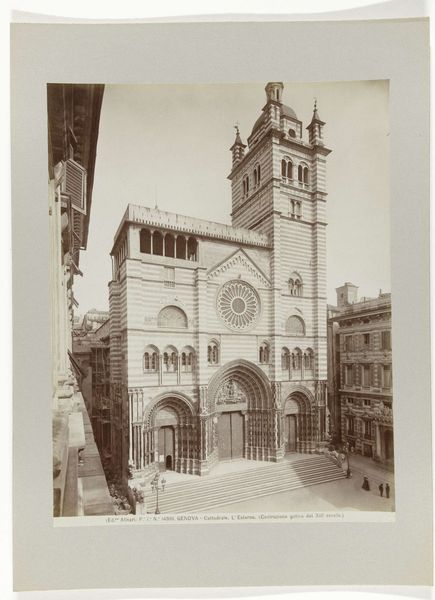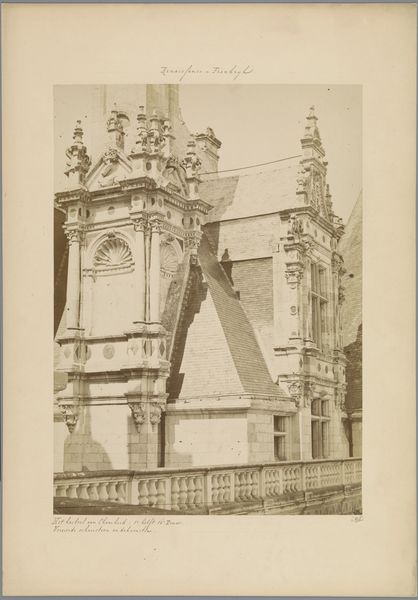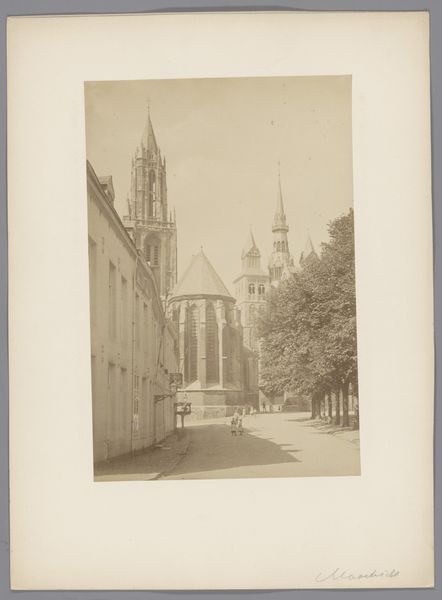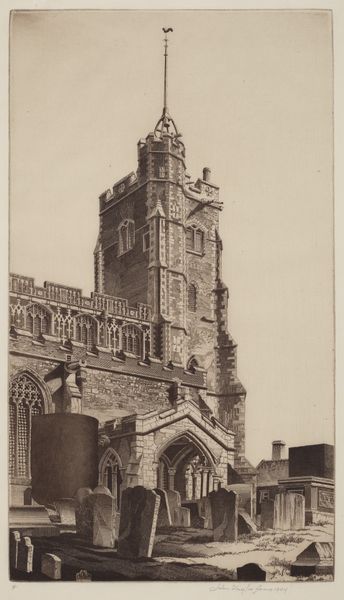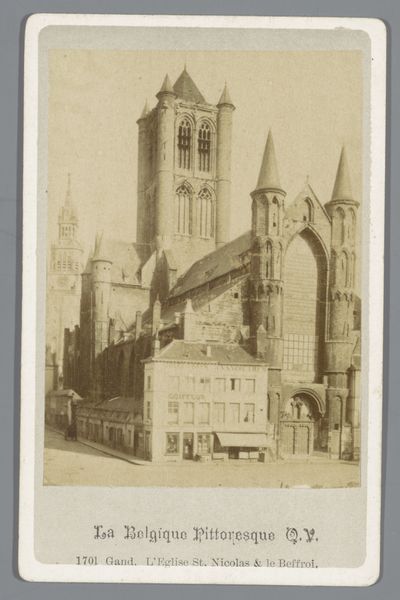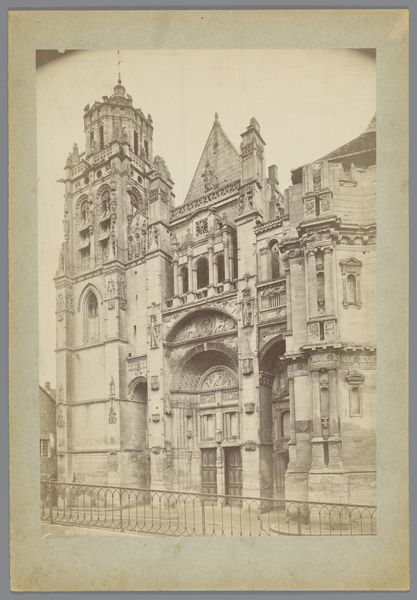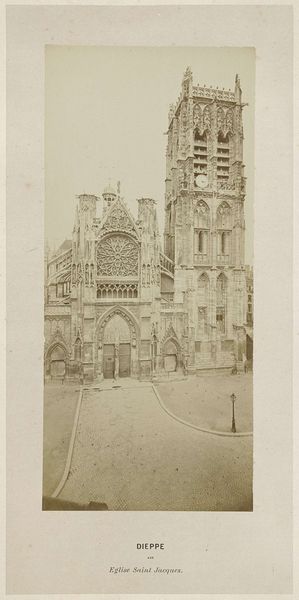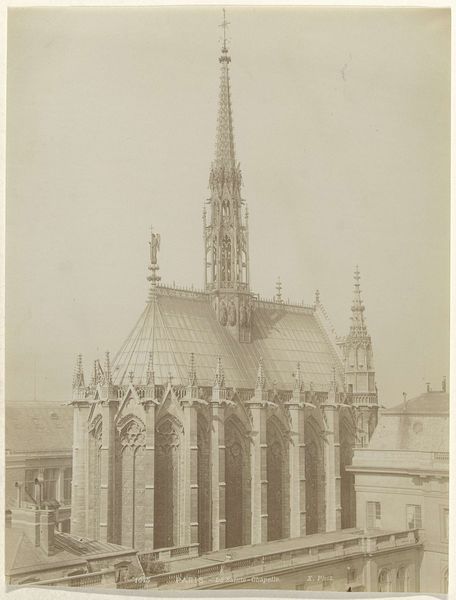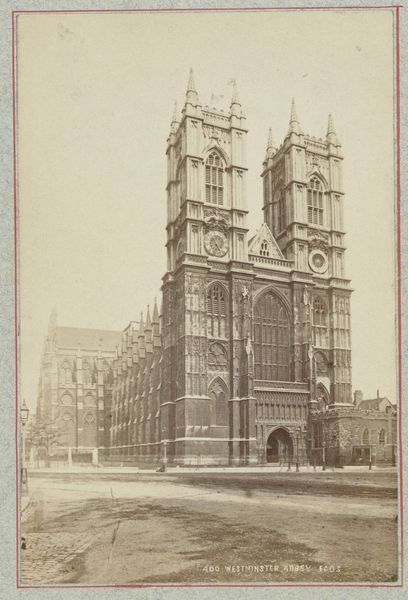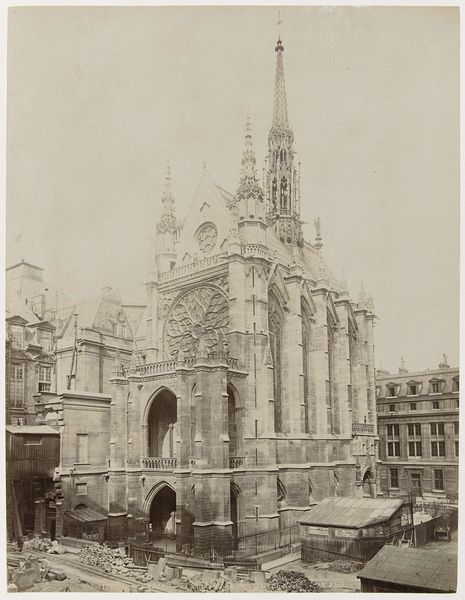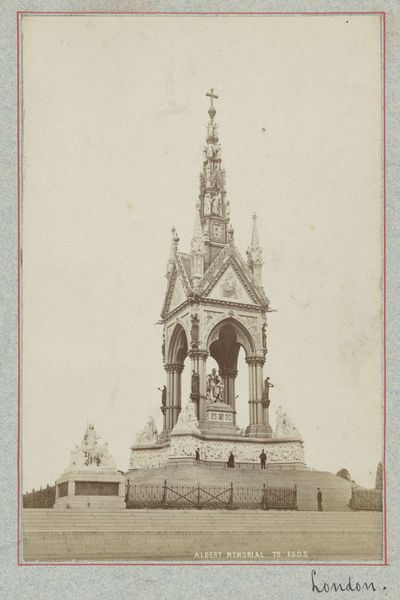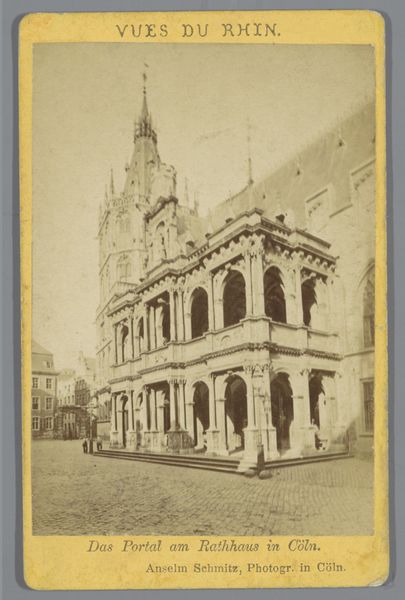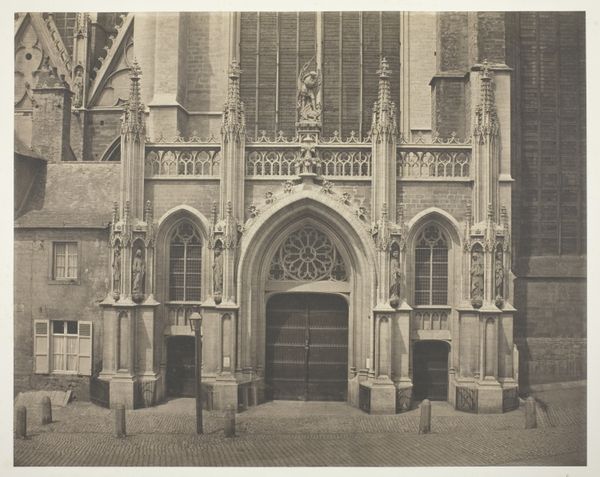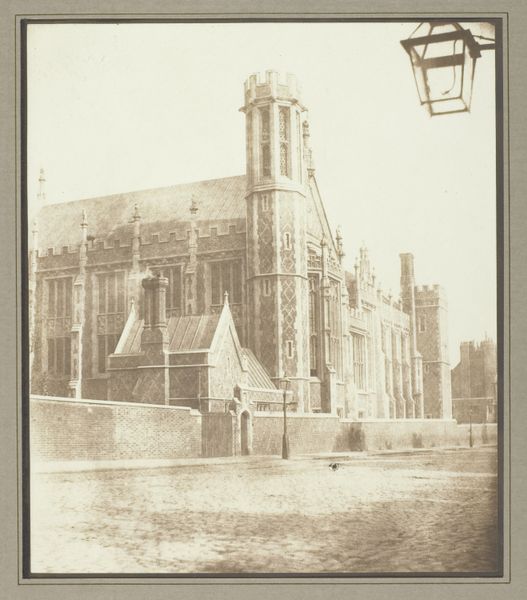
print, photography, architecture
#
16_19th-century
# print
#
landscape
#
photography
#
19th century
#
cityscape
#
watercolour illustration
#
architecture
Dimensions: height 168 mm, width 110 mm, height 242 mm, width 344 mm
Copyright: Rijks Museum: Open Domain
Curator: Here we have a photograph from between 1870 and 1881 of the Guildhall in London, credited to Francis Godolphin Osbourne Stuart. Editor: There's something really ghostly and imposing about it, isn't there? That stark courtyard, the heavy, ornamented architecture pressing down... I feel a bit small looking at it. It almost sucks the color right out of the scene, despite, obviously, not being a colorful scene to begin with. Curator: It’s certainly a statement of civic power. Look at the detail achieved in the print, it’s remarkable. The photograph must have taken great skill. How did someone achieve this in the 1870s? The sharpness of the architecture, even at a distance. I would assume a longer exposure and a steady hand. Editor: Absolutely. And it makes you think about labor too, doesn't it? About the stonemasons, glassmakers, all the unseen hands that went into erecting the Guildhall itself, which this photograph captures. The sheer quantity of materials, the transport logistics in the 19th Century, all for this display of… well, governance. It speaks volumes, silently. Curator: You're right, thinking about the process makes me reflect upon all the work that is represented in this artwork in two distinct aspects: creating this majestic Guildhall and taking such high definition photos at that time! I wonder what statement the photographer meant to create? What meaning the photographer extracted from his craft? Was this more than just "pointing and clicking?" Editor: I doubt it, though he likely wanted to record it with some accuracy. Also, consider the distribution. A print like this, reproduced, made this civic symbol accessible to a wider public. Before mass media, how did the common person engage with something like this? Curator: I love that it invites us to think about history on multiple scales, from the grand design of a city to the solitary figure with their camera in a courtyard. What remains and what decays. Editor: Indeed, it encourages us to understand an archive and see its influence to this day. Thank you for your insights!
Comments
No comments
Be the first to comment and join the conversation on the ultimate creative platform.
